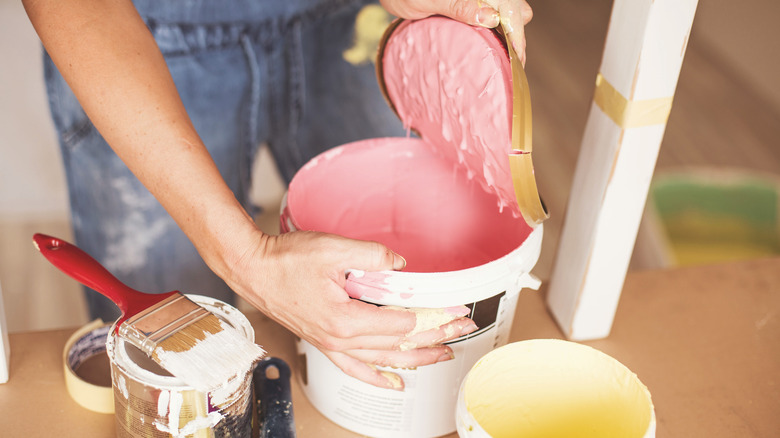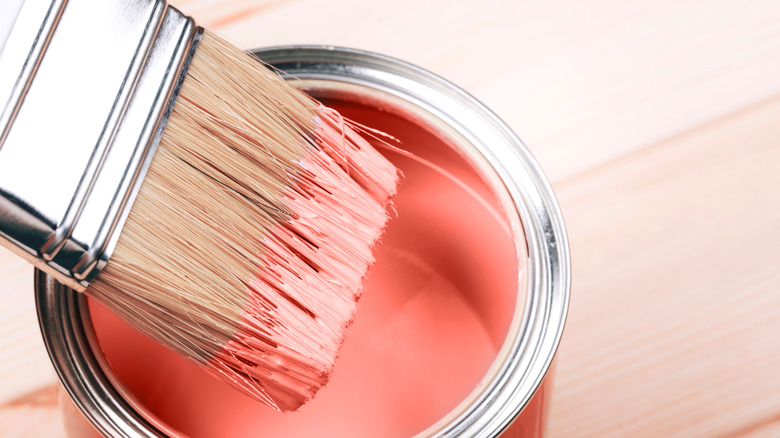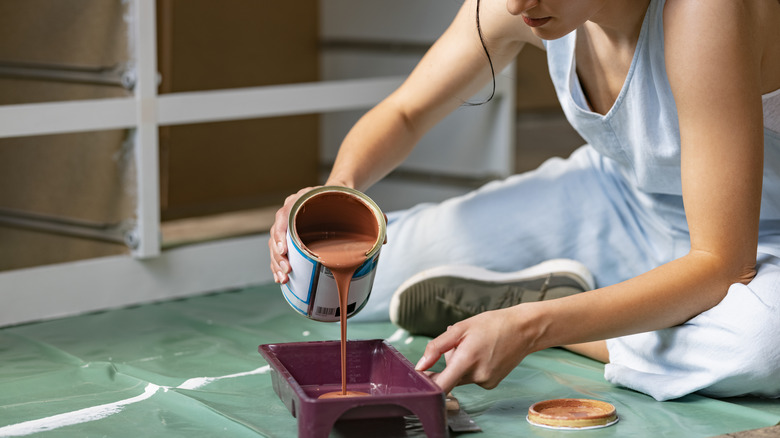How To Tell If Your Can Of Paint Is Rotten
Most homeowners partake in the time-honored tradition of keeping old paint cans, well, for what seems like forever. You never know when you're going to need to do a little repainting here and there, after all, and there's perhaps nothing more disappointing (painting-wise) than getting primed to do some touch-ups around the home, only to find your leftover paint has turned rotten.
How do you know when you've got rotten paint on your hands? One, the paint will lack its expected smoothness, and two, it will smell unusual. If you stir up your leftover paint and see chunks, lumps, or a grainy texture, chemically, the paint is no longer the paint you purchased and you should properly discard it. Another rotten sign — which you'll likely notice first once you reopen the paint can — is that the paint will have a foul scent. Paint that's gone bad will smell rancid and/or sour.
What causes paint to rotten
So, now that you know how to identify rotten paint, you might be wondering why it goes bad in the first place. One of the main causes is not storing the paint properly. To keep paint in good condition, you should store it in a cool, dry spot with a constant temperature, such as inside a closet in your basement. With this said, oil-based paint, the type typically used for molding and trim projects, is less susceptible to spoiling due to temperature fluctuations than water-based wall paint.
Another thing that can cause paint to go bad is bacteria. When you dip a painting tool directly into a can of paint, you may introduce rot-forming elements to the liquid. Pouring paint into another container, like a disposable cup for brushing or a paint tray for rolling or using a paint pad, reduces this type of risk.
Also, properly sealing your paint can, can help prevent the paint inside from going rotten. An often-recommended hack for keeping paint as fresh as possible during storage is covering the can with plastic wrap before securely replacing the lid. Transferring partially used cans to smaller air-tight containers can also keep spoilage at bay over time. Just be sure to mark the new container with the color by painting a swatch on the outside before adding it to your cache of cans.
Tips for using leftover paint
Many types of interior paint will last well beyond the expiration date listed on the can when stored properly, regardless of the brand you choose. The colors, however, can separate over time. If you notice the consistency is still good (and there aren't any telltale signs of rotten paint like chunks and/or lumps), but you can't hand stir it adequately on your own to get the color right, taking the paint can back to the store to be shaken can solve the problem.
Even when stored under the right conditions, though, aged paint can become too thick to spread evenly. If the thickening is slight, you might be tempted to thin the paint a little using either a bit of water for latex paint or special thinners for oil-based paints. Take care to follow safety instructions when using paint thinner and remember that any amount of thinning will change the paint's color.
Another problem called skinning can also occur if the paint is exposed to air for too long before being resealed, or if the can wasn't sealed well before storage. This results in a layer of dried paint over the liquid remaining in the bottom of the can. Note, accidentally stirring some of this "skin" into the paint can result in particles that make for a less-than-smooth surface when the paint dries.
Nevertheless, with some care, you can avoid problems like these, including opening a can of rotten paint, and keep using your leftover paint for those all-important touch-ups around your home.


